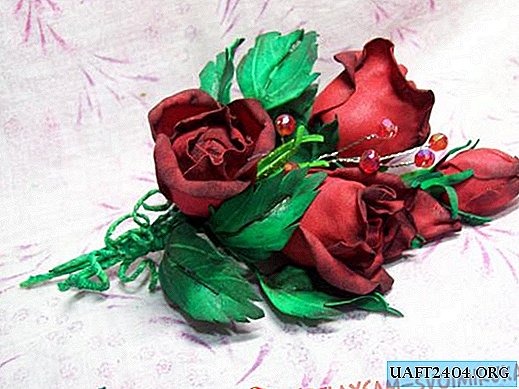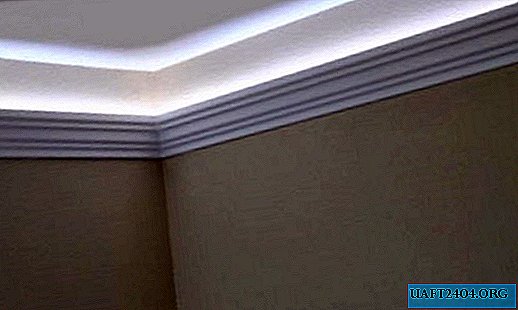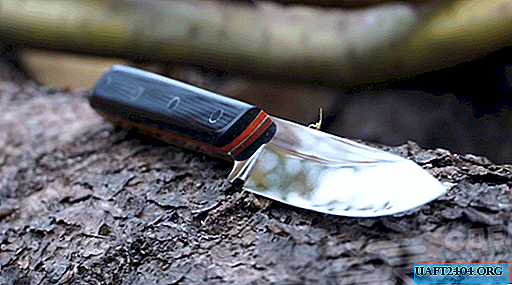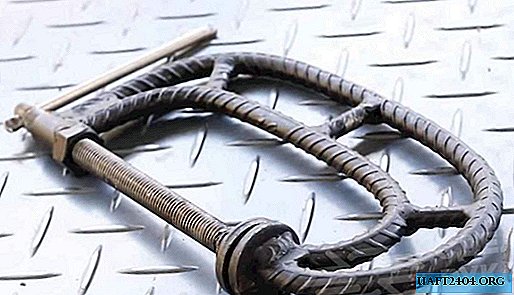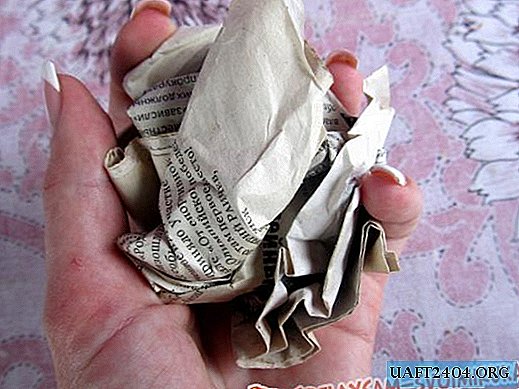Share
Pin
Tweet
Send
Share
Send
1. Distribution of wires with fixation
We produce a standard clamp for several wires with a plastic tie, but do not tighten it. We distribute the conductors in one line. We also insert a cable tie between the wires, which will be perpendicular to the first clamp. So do with everything between all the wires. Excess tips must be cut off after pulling all the fasteners.
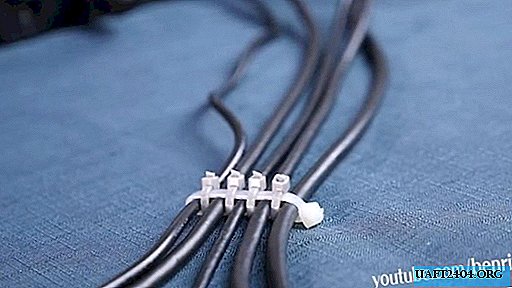
2. The handle on the box
We fold the plastic puff into a loop, which we bend in half so that it can be inserted through the hole for the handle. Having installed two couplers in place of fixing in a box so that their locks remained inside, we connect external loops with an additional clip.

3. Phone stand
We make two loops of screeds. Their diameter should be such that a mobile phone can be inserted into them. We put them on our device so that the ends after the lock remain behind, and serve as a support.

4. Overhead surge protector
Tighten the two ties on the power strip on both sides. We insert one more clip into them, making small loops. We will use them in order to hang the structure on hooks.

5. Wire clip
From a plastic screed we make a sliding loop, having previously cut off the clamps at the end. It can be used as a reusable clip for convenient storage of wires.

6. Mug from a glass
So you can get a mug for cold drinks, but you need a glass that expands up. We tighten two plastic clips on the machine in places of 3 cm, departing from the bottom and top. Through the resulting rings we extend three puffs, which we connect one by one into the ring, making it look like a handle. We cut off the excess elements, giving the product a good aesthetic appearance.

7. How to trim the tip of the puff
This is usually done with scissors or wire cutters. However, then a small tip with sharp edges will remain, which can cause injury. That is why this operation is best performed using pliers. To do this, they clamp the tip under the lock itself and rotate it to remove it.

8. Economical and safe cutting tightening
Most often, they try to cut the puff in the middle. At the same time, there is a great risk of damage to both the hands and the fixed material itself. Also, after such cutting, the used fastener must be discarded. If you cut the puff under the lock itself, then it can be reused. This method is safer, because in this place there is always a supply of free space.

9. Extension
All puffs have a specific length. Therefore, they are suitable for fixing strictly defined objects in volume. It is not recommended to use a tightening at the maximum possible diameter, since there is a great risk of it coming out of the lock connection. It is better to simply use two latches, inserting the end of one into the lock of the other.

10. Unfastening the puff
Quite often there are situations when such a latch is pulled idle. Most people then take a puff. However, there is a way to open it without damage. To do this, with a thin metal object, the latch in the lock is unbent, and the ends are pulled back.

11. Hanger for delicate things
You will need a regular “coat hanger” wire hanger, five plastic spring clips and five plastic ties. We insert a latch into each clothespin, which will connect it to the lower bar of the hanger. So we get “shoulders” with five clothes pegs, with which you can accurately fix delicate things.

12. Hanger for drying pillows
Wire "shoulders" are interconnected for the middle of the lower crossbar. Then we stretch the hangers, giving them a rhombic shape. The pillow is dried, clamped between two folding "shoulders", hanging them.

13. Rings for curtains in the shower
Replace the rings for the curtains in the shower with plastic clips. To do this, they are threaded into the grommets, fastened with a lock, creating a kind of ring. All unnecessary elements must be removed so that they do not cling to the material during operation.

14. Key ring
Replace a regular key ring with a standard plastic clip. It is enough to fix it on the keys, without making a strong tightening.

15. Bottle flask
Using a small plastic bottle, a puff and a carabiner, you can make an inexpensive and practical flask. To do this, you need to use the plastic ring left when you open the lid. If it is not, then create this element yourself, using a puff. Under the ring we insert the lock, closing it with a lock. So we get a strong loop that can withstand heavy weight. For it, with the help of a carbine, we fasten the flask to the belt.

16. Protection of the lighter from arbitrary key presses
To prevent accidentally pressing the lighter button in a bag or backpack, you need to install a special lock on it. They make it out of a plastic clip, which surrounds the lighter under the button itself, blocking both its arbitrary and deliberate pressing. You can only use the device after removing the latch.

17. Plastic binding
If you have sheets that are sewn together with a plastic spring, but it is missing, then binding can also be done using puffs. Pages are connected by creating rings, through holes in the paper. Usually three puffs are enough, which are located symmetrically from each other.

18. Slider tongue
Very often, the tongue on the slider in the snake clasp breaks or pops out of the loop. At the same time, it is impossible to put it back, since the gap of the fastener becomes too large, and physical impact on it can destroy this part. Therefore, it is better to insert a plastic puff into the slider, creating a ring. It is wider, stronger and does not make sounds when you hit the slider itself.

19. DIY spinner widget
For manufacturing, we need three bearings and three plastic couplers. Bearings line up like three circles. They are fixed among themselves, combining a plastic screed. Tighten the loop very firmly. Further, in the places where the bearings are joined, we produce clamps with clamps. So we not only produce a kind of separation, but also create a bearing lock in another plane. After trimming the ends, the spinner is ready.

20. Soap bubbles
If you have lost a ring for blowing bubbles, then you can do it yourself. For this, a loop with a large residual tip is made from a plastic puff. We use it as a pen, and the ring is suitable for forming a bubble.

21. Plastic shoelaces
This product allows you to easily wear shoes without wasting time unfastening or tying. For its implementation, it is necessary to connect the opposite holes for the laces with a plastic screed. The clamp level is adjusted on the foot in order to immediately measure a comfortable position. The excess is cut off.

22. Baggage protection
On all hiking bags and backpacks there are two runners on a fastener which move towards each other. When they are together, it is impossible to open luggage, but often during transportation these elements are disconnected independently. So the contents of the bag may be lost or stolen. To prevent this from happening, the tabs on these runners are interconnected with a plastic screed.

23. The handle on the lens
If you put a plastic coupler on the lens, fixing it on the adjustment ring, you can make a convenient handle. It allows you to configure without looking up from the camera to find a control.

24. Convenient handle for a cover
So that the hot lid on the pan does not burn your hands, you need to secure it. To do this, we fasten a plastic screed over her handle, pulling the tip high up. By lifting the lid for it, you will not only protect yourself from touching a hot surface, but you will also be at a safe distance from steam.

Share
Pin
Tweet
Send
Share
Send

